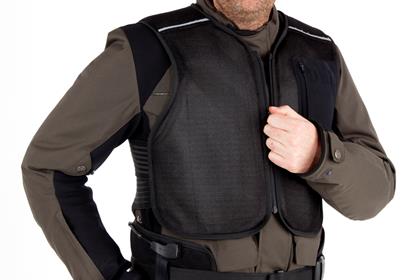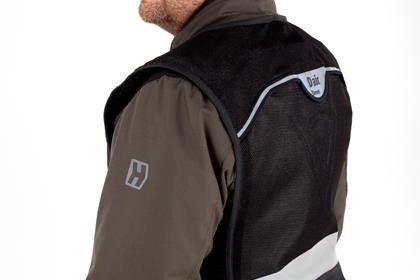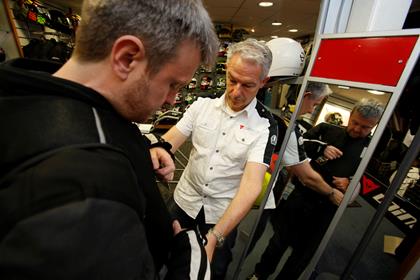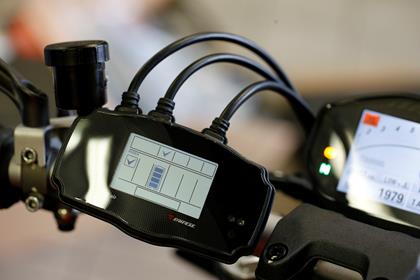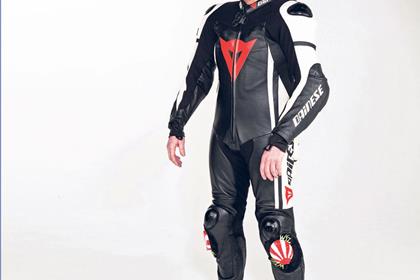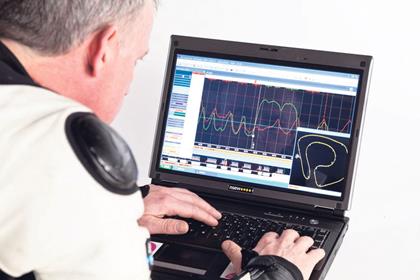Under the skin of Rossi’s Dainese leathers
“You love your suit because it must protect you those times – better if just a few – when you fall,” says Dainese’s most high-profile suit wearer, Valentino Rossi. “To have a Dainese suit was a dream, because only the best and most famous drivers had one. For me wearing the first Dainese suit was a great gift”.
Valentino has been wearing Dainese for over twenty years now, during which time he will have witnessed the incredible advances in rider protection first hand (and sometimes knee, arse, and elbow first).
To get under the skin of his iconic suits, MCN recently made the pilgrimage to the Dainese factory to see one of his suits being made. You can watch that video below.
You can also see even more in this official Dainese film, or see more about the history of Dainese leather production here!
As well as making some of the finest leather suits, Dainese can also boast D|Air equipped suits and D|Air Street, and MCN have tested both:
Dainese D|Air Street airbag vest, £699.99 and sensor kit, £439.99
Time tested: Seven months/5000 miles
What’s good? It’s reassuring to ride with Dainese’s electronic system watching over me. It can detect when an accident is happening and fire an airbag to protect my neck, shoulders, chest and back. The two kits – the vest and the sensor kit – were supplied by Hertfordshire Dainese dealer BikeStop and fitted by their tech partners at nearby Honda dealership, Norton Way. Fitting takes half a day with the cost included in the price. Sensors under the seat and on the fork legs aren’t intrusive, although the bar-mounted control unit is quite bulky. The vest can be worn over normal kit and it’s possible to wear a rucksack over the top. When I’m riding, I don’t even know it’s there, which is why it’s handy to have a status indicator on the bars to show the battery is charged and the system is armed. The battery lasts ages on one charge – Dainese claim over 20 hours of riding time, and my experience suggests it’s more than that. It charges overnight through a simple USB.
What’s not? Some will criticise the high price – £1140 total. But there is a lot of tech here and to my mind it is a superior solution to airbags that are activated by a tether that connects rider to bike. There is a further inconvenience of a service every other year that needs to be carried out at Dainese. BikeStop have an insurance/service plan that covers all costs of refills and discount on repairs for damage caused in an accident.
D-Air Street comprises – a sensor kit (the M-kit) and the vest (J-kit). The M-kit has an underseat sensor to detect impacts from the rear, fork sensors to detect front impacts and a bar-mounted computer processor unit (CPU) that also displays status. The underseat sensor also detects if the bike is falling.
Pillions protected – Both rider and a pillion can wear vests and the M-kit on the bike will trigger both simultaneously. The M-kit is powered from the bike’s electrics and the J-kit has a self-contained battery that is recharged by a phone-style charger. Dainese claim over 20 hours of riding time per charge.
LCD display – The LCD display on the CPU informs the rider of the status of the vest’s battery, whether the two kits are connected properly and also flags up any errors.
Wireless connection – The J-kit and M-kit both have phone-style SIM cards and communicate wirelessly. If it detects and accident the M-kit sends the signal to inflate the airbag and it takes 45 milliseconds from first contact between bike and a foreign object for the vest to be fully inflated.
Dainese D-Air Racing suit, £2409.99-£3239.99
Time tested: One year/2000 miles
What’s good? This racing suit, exclusively for circuit use, has an electronically-activated airbag that is inflated in the event of a crash. Dainese claim the airbag reduces the risk of direct impact between the rider’s helmet and collarbone in a crash, limiting harmful neck flexion. Three accelerometers, three turn meters and GPS continuously monitor riding activity and compare values to pre-recorded crash data. If the values indicate a crash, the airbag will be triggered. As well as the safety aspect of the suit, Dainese has integrated a 2D data recorder into the system, which stores GPS data that can be downloaded after each session. It provides an incredible amount of data, including lap time, section times, track map, lean angle, speed, distance, time, inline and lateral forces. I’ve not had a crash in the suit, so can’t comment on the airbag’s protective qualities, but having used the suit for a year I am impressed with its functionality, particularly the data recording function.
What’s not? The suit itself weighs around 3kg more than the average suit and, with no ventilation holes, things do get a bit sticky in summer. The download and charge cable access could be better too. As the electronics are stored in the hump you have to connect the cable directly behind the neck, which means it’s necessary to remove the suit to download data.
• The datalogging kit contained in the suit would cost around £2300 on its own, so for those buying a datalogger anyway, this is a way of getting a free airbag suit with it.
• This is the basic, off-the-peg suit in standard colours (£2409.99). The higher price options cover colour choices, extra lettering, and a made-to-measure service.



